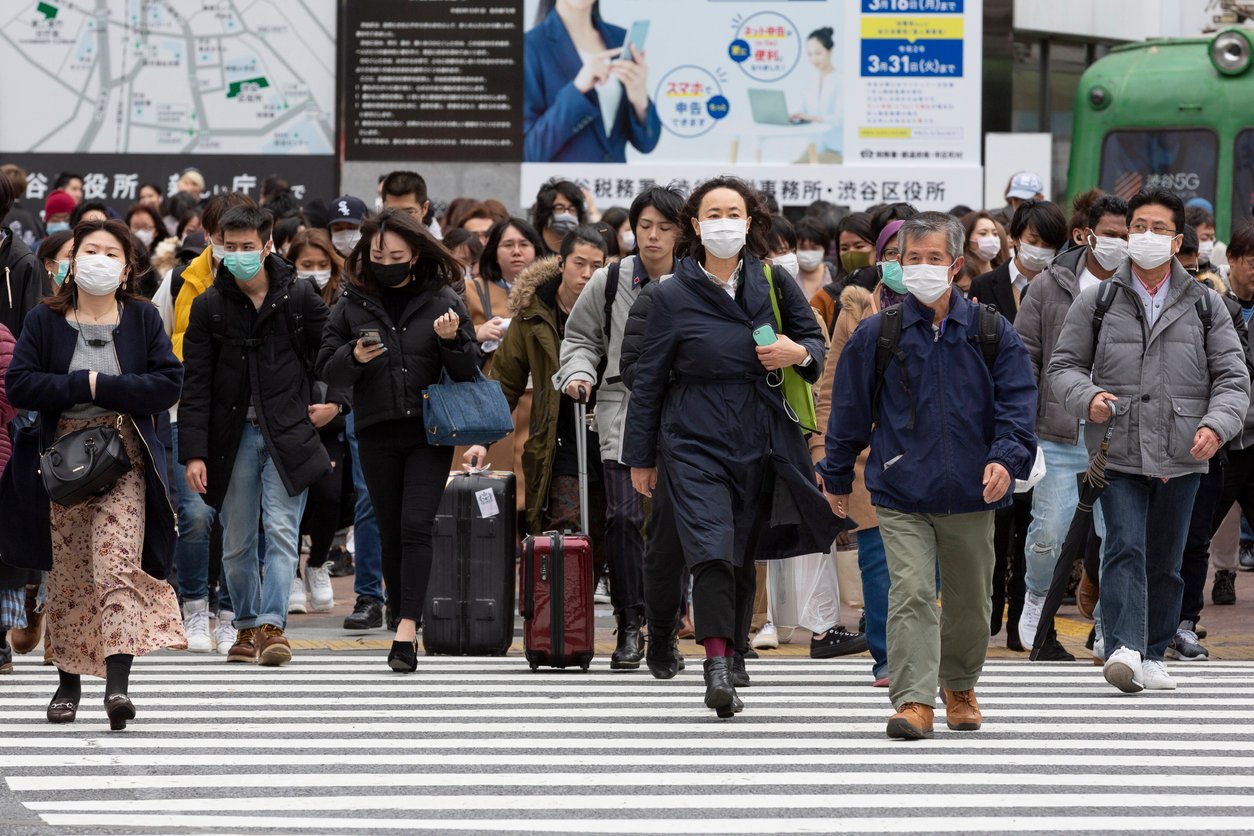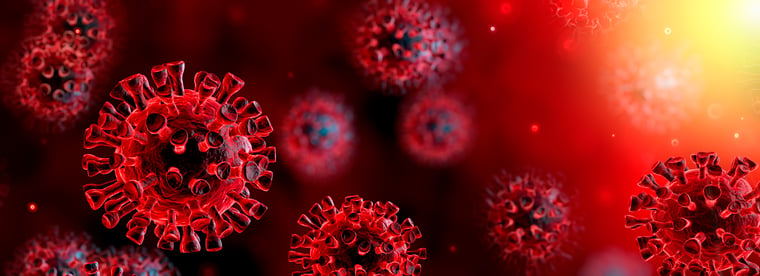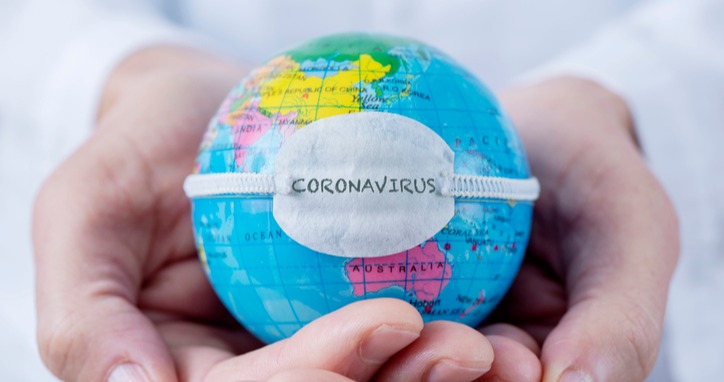Search the latest and greatest job opportunities in sport
 With dozens of international sport events having been postponed or cancelled around the world amid the outbreak of the Coronavirus disease (COVID-19), Professor James Skinner & Professor Aaron C. T. Smith of the Institute for Sport Business, Loughborough University, London track the history of infectious diseases in sport and assess the tHreat the current global health crisis presents for world sport.
With dozens of international sport events having been postponed or cancelled around the world amid the outbreak of the Coronavirus disease (COVID-19), Professor James Skinner & Professor Aaron C. T. Smith of the Institute for Sport Business, Loughborough University, London track the history of infectious diseases in sport and assess the tHreat the current global health crisis presents for world sport.
The past decades have generated widespread concern about the potential for the cross-border spread of health risks, particularly infectious diseases. The increased attention to global health within the international community stems from two sources – (1) higher disease prevalence and (2) concern about growing national vulnerability to health threats that originate externally. Dogson, Lee and Drager (2002) pointed out: ‘by definition, a global health issue is one where the actions of a party in one part of the world can have widespread consequences in other parts of the world” (p.23).
Since the mid-1970s – a time when it was widely assumed that most infectious diseases had been conquered or at least controlled – a troubling array of previously unknown diseases have emerged.
Although, a variety of health conditions and risks to health manifest themselves as transnational phenomena, infectious diseases generate the most concern. While infectious diseases are pervasive in human society, recent history shows that their social and political significance varies. The middle of the 20th century brought optimism that infectious diseases are waning. Better vaccines, including one for yellow fever, and decreasing incidence of typhus and relapsing fever after World War 1 signaled that infectious diseases could be controlled. Public health professionals and society at large in some ways saw the progress towards disease eradication as halted. Grady’s (2002) comment typified the altered situation; Since the mid-1970s – a time when it was widely assumed that most infectious diseases had been conquered or at least controlled – a troubling array of previously unknown diseases have emerged, including Lyme disease, AIDS, mad cow disease, the Ebola virus, Legionnaires’ disease and a host of others. In addition, old diseases like yellow fever, malaria and dengue fever have reappeared in their former haunts and spread to new areas. Some microbes, like the ones that cause tuberculosis, malaria and food poisoning, have become dangerously drug resistant. (Grady, cited in Dogson et al, 2002, p. 131)
One could still perhaps argue that the single most important health impact on sport has been HIV/AIDS. The HIV/AIDS epidemic has bought new attention to the discrepancies in health care availability, and challenges the international community to address inequalities. The long-term economic and social costs of HIV/AIDS have been seriously under-estimated in many countries. Projections 15 years ago suggested that some countries in sub-Saharan Africa would face economic collapse unless they bought their epidemics under control, mainly because HIV/AIDS weakens and kills adults in their prime – depriving communities of qualified professionals and skilled labor (World Health Report, 2004). The implications of this for the ongoing development of sport within Africa would continue to be effected at the grassroots and elite levels, particularly as generations of young men and women could be potentially affected by the disease.
The impact that HIV /AIDS on the sporting world was initially met with mixed reaction. HIV/AIDS in its early beginnings was seen as a disease that was the result of one’s sexuality – specifically homosexuality – or the result of intravenous drug use. In many ways the initial response of the sporting world to the possible consequences of a HIV/AIDS epidemic was a reflection of this homophobic mentality and subsequently the sexual habits of most athletes did not change. In their essay HIV, the Game Official, and Control and Prevention form the late 1990s Corrie J Odom and Greg Strobel pointed out: that for many ethical and legal reasons, mandatory HIV testing of athletes or other game personnel does not exist in many sports” (p. 37), although the majority of governing bodies, particularly in contact sports, had adopted policies for handling blood.
The personal stories of athletes such as Magic Johnson, Greg Louganis, Arthur Ashe, Tommy Morrison and Tom Waddell who were all diagnosed with the ‘human immunodeficiency virus’ (HIV), which progresses to acquired immunodeficiency syndrome (AIDS) raised greater awareness of the HIV/AIDS issue within sport. The first high profile case was that of Arthur Ashe. Ashe was the first African American to win Wimbledon in 1975. In 1983 Ashe received a blood transfusion during surgery to hasten his recovery, however, it was tainted with HIV unbeknown to Ashe, the hospital and the medical team. For much of the time he had the disease he did not formally announce his condition. In 1992 Ashe made a public announcement about his condition and continued to fight the disease until his death in 1993. Nearly ten years after Ashe was diagnosed Los Angeles Lakers star Earvin ‘Magic’ Johnson publicly acknowledged that he had tested positive for HIV. Johnson announced that he would be immediately retiring from basketball but would take on the role of educating young people on the need for safe sex practices (Johnson contracted the disease through an unprotected heterosexual encounter).
However, HIV is not the only disease that that had the potential to impact on global sport. Other diseases were also a representation of the consequences of globalization, in particular Severe Acute Respiratory Syndrome (SARS) and Bird Flu. A great deal of the criticism surrounding these diseases centered on the possibility of governments trying to downplay the spread and consequences of the disease. There was a very real possibility that the SARS virus or similar strains could have continued to spread and evolve into a major health threat. SARS, thought to be caused by a type of coronavirus, which is only a single strand of RNA (ribonucleic acid). This point was of particular concern among the medical community because its structure makes it very easy to mutate. SARS severely taxed health care systems in effected countries; neighbouring countries curtailed flights in and out of affected locations and blocked transfer of SARS patients for medical care.

Avian flu, or Bird flu also emerged as another potential global health issue. The H5N1 strain of bird flu demonstrated its capacity to directly infect humans. The H5N1 strain was capable of infecting a broad range of hosts, which may help explain why the media reports of infections and deaths in mammalian and avian species not normally considered susceptible to infection and severe disease. Countries were urged maintain a high level of vigilance, and must not relax their surveillance and detection efforts. In 2004 the World Health organisation (WHO) called on Asian nations experiencing widespread bird flu outbreaks, to remain persistent in their intensive efforts to contain the virus, supported this position.
The Ebola outbreak in 2014 needed to be considered in this context. There is no doubt that the Ebola (EVD) disease is a frightening and intimidating epidemic. It is transmitted in the human population through contact with sweat, blood, bodily secretions, infected organs or other bodily fluids, Ebola can also be transmitted through sexual activity. Ebola has been quite well chronicled and was identified and called after the Ebola river in the Democratic Republic of Congo in Africa, where the virus took its first fatalities in 1976. According to WHO and numerous newpaper sources, Ebola can have as much as a 90% mortality rate and the current rates of mortality are upwards of 70%.
At the time International federations and sporting organisations knew little of the Ebola threat and the consequences that might force them to abandon or delay sporting events that are have a global context. In actuality the precipitous materialisation and rapid spread of the Ebola virus throughout West Africa had already caused some confusion between differing states and international sports organisations. The Ebola threat had an impact on sport events and athletes competing. Athletes from some of the African countries affected by Ebola were banned from competing in the Nanjing Youth Olympic Games in China causing the International Olympic Committee to issue a statement in August 2014 saying: “We have been reassured by health authorities that there have been no suspected cases and that the risk of infection is extremely unlikely”. However, the risk was deemed large enough to request that the Sierra Leone Olympic Committee do not send athletes to the Youth Olympics. Athletes from Nigeria were also banned from the Youth Olympics but not before they had already been fully integrated into the Olympic village. Combat sports and swimming were the most affected by the ban, suggesting there were potential implications for the holding of future World Championships or similar events.
Morocco asked the African Football Association [CAF] to postpone the event for six months for fear of supporters carrying the Ebola disease across borders.
Ebola also led to major consequences for football, in particular the African Cup of Nations, which was originally scheduled to take place in early 2015 in Morocco. After receiving advice from WHO, Morocco asked the African Football Association [CAF] to postpone the event for six months for fear of supporters carrying the Ebola disease across borders. This postponement would have had a major impact on the income generated from broadcast and sponsorship revenues, as a result, the CAF decided to transfer the competition to Equatorial Guinea. Once the event was transferred Equatorial Guinea secured 50 doctors from Cuba and put into place ambulances and thermographic cameras to screen fans. Europe’s top clubs were uneasy about sending their players to the competition. The German Bundesliga voiced its concerns. It supported clubs such as Borussia Monchengladbach and Werder Bremen in their attempts to take precautions against Ebola infecting for their players travelling back for the African Cup of Nations. Football was also badly affected in Sierra Leone with many matches being cancelled and supporters excluded from some events. Liberia also prohibited all football matches for fear of spreading the disease.

Coronaviruses are a family of viruses that cause disease in animals. Seven, including the new virus, have made the jump to humans. The new virus, officially called Covid-19 is part of a large family of viruses that cause illness ranging from the common cold to more severe diseases. Coronaviruses are zoonotic, meaning they are transmitted between animals and people. The source of Covid-19 is believed to be a ‘wet market’ in Wuhan which sold both dead and live animals including fish and birds. Such markets pose a heightened risk of viruses jumping from animals to humans because hygiene standards are difficult to maintain. At present it is impossible to predict with certainty how far the disease spread, to date it has not yet been categorised as pandemic and is still classed as a large epidemic. However, on its current trajectory, it is likely to spread to more countries, affecting many more people, and now impacting significantly on sport beyond previous global health crises.
The virus has plunged the global sporting calendar into disarray and cast doubt over the tournaments such as the Six Nations Rugby, Euro 2020 and football fixtures across Europe.
Dozens of international sport events have been postponed or cancelled around the world amid the outbreak of this new type of coronavirus. The pathogen's effect has been felt across a range of sports from athletics, rugby and golf to football, tennis and motorsports. The virus has plunged the global sporting calendar into disarray and cast doubt over the tournaments such as the Six Nations Rugby, Euro 2020 and football fixtures across Europe There is talk of playing games in empty stadiums, such a scenario reducing revenues from gate takings, potentially reducing viewership numbers for broadcasters, with sponsors and advertisers tnot achieving the target market reach they planned for.
Of increasing concern is the potential impact of the virus on the 2020 Tokyo Olympic Games. Major sporting events such as the Olympic Games generate large revenue streams. These types of events are planned years in advance however the coronavirus has the potential to threaten the staging of the event. Costs associated with staging major sporting events may escalate further. Security costs have continued to increase since the first major terrorism attacks at the Munich Summer Olympic Games in 1972, with the Montreal Summer Olympic Games setting the trend for heightened security with $100 million spent to protect the athletes, rising to about $1.6 billion for the London 2012. Future precautions, for example, screening for the coronavirus or similar yet to be identified viruses, may need to be factored into the cost structures in future bid applications. Although the incubation period for the coronavirus is approximately fourteen days, which is enough time for an athlete to escape detection and the disease to spread within the athlete’s village, entry screening at airports prior to the Tokyo Games may become mandatory. Special triage units may need to be set up in the Olympic or Paralympic villages to deal with potential outbreaks. Mobile medical squads might be utilised in order to quickly prevent the spread of a disease. Organising committees would be required to have contingency transportation plans in order to deal with a highly contagious disease outbreak.
This form of ‘global health crisis’ represents a major threat to international sport. For example, the timing of these outbreaks could suggest that Tokyo’s greatest threat is from disease and not terrorism. The potential economic cost and commercial implications for governing bodies, sporting organisations and media corporations is substantial but needs to be considered against the possibility of a global health crisis. Managing this tension will become even more important as the probability of an increasing global health threat becomes a growing concern.
Search the latest and greatest job opportunities in sport
In the world of professional sports, sponsorship represents a significant source of revenue and plays a vital role for t...
Read moreThe sports industry is a vibrant and multifaceted industry, made up of a diverse range of sectors that shape its global ...
Read morePablo Romero, director of protocol at Sevilla FC and lecturer in the UCAM Master's Degree in Sports Management, shares t...
Read more